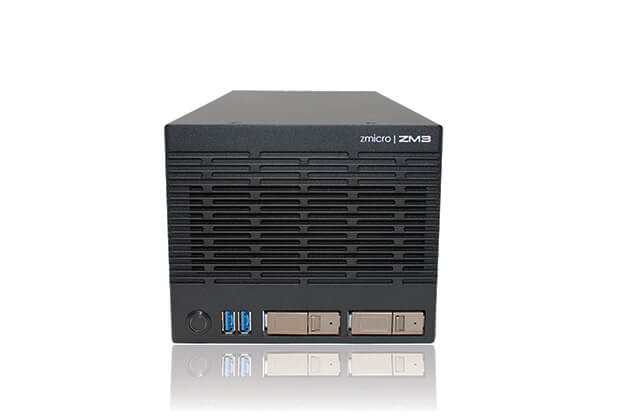By Jason Wade | November 9, 2020
COM Express Type 7 Will Revolutionize Rugged ISR Computing Solutions
ISR platforms are critical for gathering the deep intelligence required to ensure the safety and security of the USA and our allied partners. Recognizing this, our military now includes ISR capabilities in nearly every mission, requiring higher levels of intelligence from every node on the network.
Investments in high-resolution sensors and state-of-the-art exploitation software greatly enhance our information-gathering capabilities, but can also dramatically increase requirements for size, weight, power, (SWaP) and thermal performance. In the case of manned ISR aircraft, which can only support a set payload, increases in equipment weight require more fuel and thus limit the duration of missions.
The new COM Express Type 7 standard is a game-changer in airborne computers for ISR aircraft because it offers a far more efficient SWaP platform while delivering far more compute and networking performance. In the coming years, ISR systems will be designed around the COM Express Type 7 form-factor because it provides server-class performance with the capability to shrink the physical size and weight of ISR platforms.
Heterogeneous Processing
As ISR applications have evolved and the software has become more sophisticated and visual, there has been a shift to heterogeneous processing architectures where software tasks are assigned to specialized processors that can efficiently share the computational load. For example, applications that require real-time analysis can off-load computation to a parallel processor such as a GPU or FPGA while near-real-time requirements might leverage the CPU.
The COM Express Type 7 architecture supports this type of distributed architecture by providing up to 32 lanes of PCI Express in the system. This flexibility allows manufacturers of rugged computers to design systems ideally tailored for ISR applications by allocating the PCI Express lanes to high-end graphics cards, encoder cards, and storage devices.
Versatility in Rugged Environments
Since the COM Express Type 7 module is a PICMG industry standard, computers designed around this form-factor ensure long-term program support and versatility for rapid customizations to varying environmental requirements. For many manned ISR applications, a 50C operating temperature is sufficient, but for environments where the temperature grade is more extreme, like 70C, a more rugged Type 7 module can be used to provide users with the flexibility to determine the tradeoffs between ruggedization and performance.
Boosting performance in small-form-factor systems has always been a challenge due to stringent space and power constraints. Additionally, it’s difficult to keep up with the changing design rules associated with implementing new processor generations. COM Express solves this by essentially isolating the processor, chipset and memory from the rest of the design. This allows manufacturers of airborne computers to dial-in the right amount of performance by bringing together the best mix of available computing modules.
Storage Designed for Video Collection
Video collection and storage are pivotal to intelligence gathering. COM Express Type 7 supports the NVMe PCIe Gen 3 interface, which is designed specifically for SSDs to overcome the speed bottleneck imposed by the older SATA connections. NVMe drives support read/write speeds three to four times faster than SATA 3 to support more data and situational awareness in real-time applications, increasing the value of intelligence. In addition, the COM Express Type 7 provides 10GbE LAN to support rapid communication of video over the network.
High-Density Packaging
Military customers have clearly communicated to the industry that they want lightweight, minimized packaging. The COM Express Type 7 form-factor provides mechanical design flexibility to create systems that are right-sized for any given ISR application. Since COM Express is an industry standard that plugs into a baseboard for the supported I/O, the mechanical packaging can be tailored to optimize the physical space resulting in a very dense, efficient packing that maximizes the performance-to-volume ratio.
Since there are no physical constraints to remain in an ATX or Extended ATX form-factor, there is little to no unused space in an ISR-focused computer. Rugged computer designers now have a new opportunity to revisit their approach and strategy for the mechanical form and to respond to customer needs.

ZM3 Rugged Computer
Recognizing the potential of the new standard, ZMicro started from a clean slate to build a new rugged computer that would provide advanced computing capability—including a GPU—in the smallest, lightest form factor possible.
The result is the new ZM3 mission computer, which uses COM Express Type 7 modules to offer full-server capability in a small, rugged package that is as small as a shoebox and weighs less than ten pounds. The ZM3 incorporates two ZMicro TranzPak 1 compact removable M.2 NVMe SSDs for high capacity and best-in-class storage performance.
In addition to a 16-Core Intel Xeon D processor, the ZM3 has support for a x16 GPU, up to the NVIDIA Quadro P6000 GPU or two PCIe x8 encoder cards for video ingestion. We’ve received rave reviews about the ZM3 from customers and I will write more about it in an upcoming blog post.